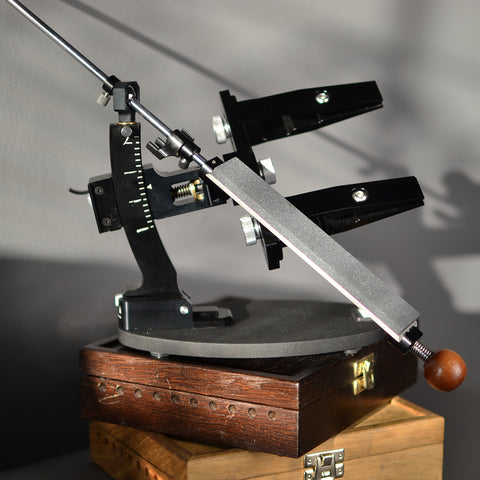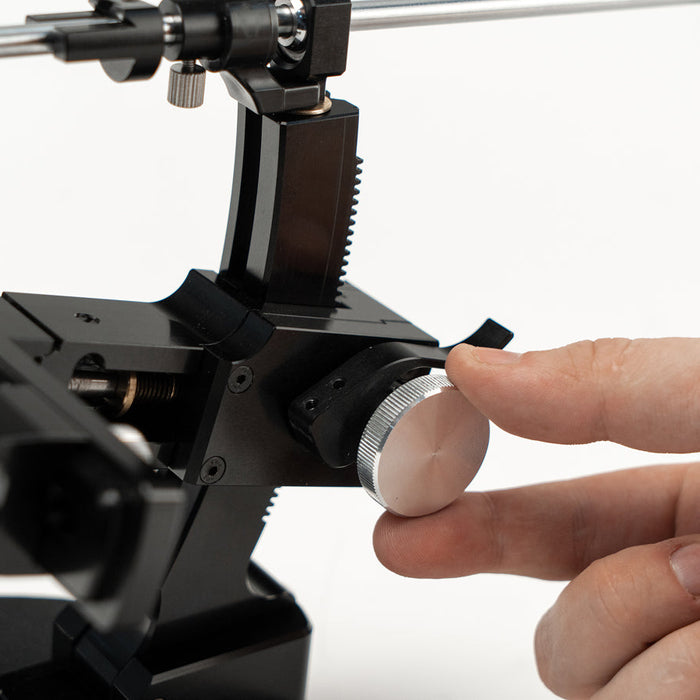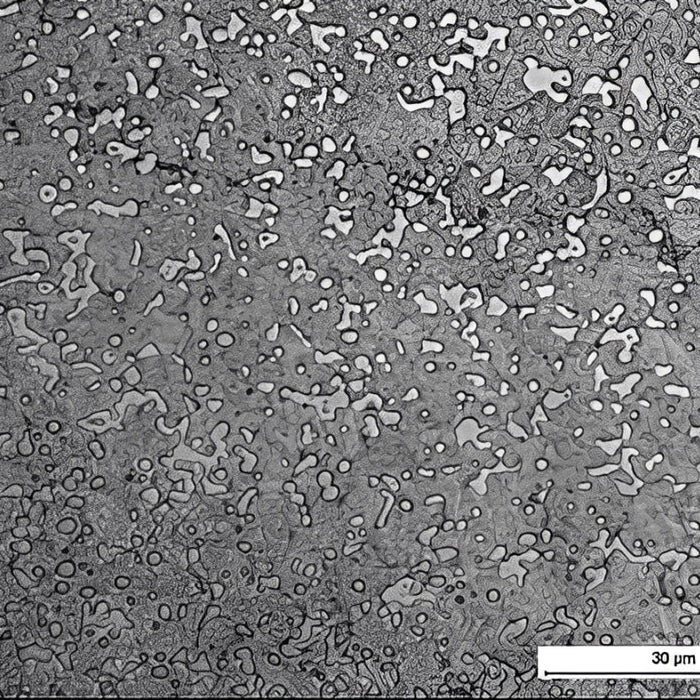How often should you sharpen a knife? The answer is not too often: during the sharpening process, the abrasive stone removes some of the metal from the blade, which accelerates blade wear. You can use techniques such as honing or stropping to keep the knife cutting edge sharp. This procedure is performed using a special rod that eliminates creases of the thin edge and restores the cutting properties of the tool.
The ceramic honing rod offers the best performance of all types of honing tools. This material is harder than steel and does a great job of restoring the sharpness of metal knives, but diamond-coated stones are more aggressive.
Every home or professional chef should know how to choose and use a ceramic sharpening rod or, as they also call it, a musat. Here is a closer look at what is a sharpening rod and what factors to consider when buying one.
What is a honing rod?
Honing is a process of straightening the cutting edge line of a blade, which restores its sharpness without removing material. This is done with a rod made of different abrasive materials, of which ceramic is the most common. This rod is usually mounted on a handle for easy use.

A honing rod or a musat does not sharpen a knife. The hardness of the rod allows the cutting edge to be pushed back in alignment, which brings it back to its original shape and eliminates rolling defects. The elasticity and ductility of steel allow you to hone a knife many times until microscopic defects appear on the cutting edge. Chipping, rolling of the edge and other defects indicate that the knife requires a full sharpening.
Honing is a process that keeps a knife sharp, which, unlike sharpening, does not remove steel from the blade. Since it does not remove metal particles from the cutting edge, the blade does not wear down and its service life extends. During honing, you merely remove the rolled parts of the edge back in line and return the blade to its original shape.
The musat consists of the following parts:
- Rod. It is made of a clay-based material - ceramics, with additional mineral and polymer additives. After heat treatment, it becomes harder than steel.
- The handle. It is usually made of wood, but sometimes it can also be made of plastic. It has an ergonomic shape and a non-slip surface for comfortable grip.
- Finger guard. It is an essential safety feature that helps to prevent your hand from getting cut and slipping off the handle, especially if the palm is wet.
Despite their simple design, honing rods can be very different from each other in terms of their specifications. Choosing the right honing rod is crucial for achieving the desired knife honing results.
Rod Material
Ceramic musats are popular among chefs and professional sharpeners due to their increased hardness. The rod is ideal for honing any kind of knife from Western to Japanese. Honing the edge does not damage it, does not accelerate wear, and provides razor sharpness.

The main drawback of ceramic products is their fragility. Dropping or hitting the honing stick can cause it to break, which means you will need to buy a new musat. There is no way to fix the situation.
To avoid such troubles, manufacturers invented metal honing rods with ceramic coating. They consist of two parts:
- High-strength carbon steel core;
- Ceramic coating with the addition of chromium oxide or tungsten carbide.
Such models do not break and have high wear resistance. In addition, the fine ceramic coating provides an even smoother surface, therefore it has a finer effect on the cutting edge.
The abrasiveness of ceramic rods
Due to the peculiarities of the material, honing rods never have a surface that is too coarse (compared to metal or diamond rods). Among ceramic honing rods, you will not find anything lower than 800 grit, that could be used to replace sharpeners.
The two most common types are:
- Medium abrasiveness — from 1000 to 2000 grit. It is an all-in-one option for straightening any dull knife;
- Finishing — from 2000 grit. They are used for honing and polishing the blade.
However, remember that in addition to a honing stick, there should be a sharpener in every craftsman's toolbox. Sooner or later the defects on the knife edge will become too severe to be fixed. You will have to use a sharpening stone or a mechanical sharpener.

The shape of knife honing rods
A honing rod with a round cross-section is considered a classic one. Such honing tools are widespread and are familiar to most users. They are lightweight and do not require special skills to use.
But in stores, you can also find other types:
- Oval. Due to this shape, the contact spot of the ceramic surface with the blade increases. This makes the honing stick easier to use for beginners or inexperienced chefs.
- Flat. Flat-shaped rods have an even larger contact area, so it hones the edge faster and better. But it is heavier and, if used incorrectly, can damage the blade.
There are also square ceramic rods. They have different grit levels: two edges have a higher grit, and the other two have a lower grit. Thus, it is possible to have a different level of knife honing depending on how dull the knife blade is. But the sharp edges of a square rod can damage the blade if you use the tool carelessly.

Rod length
You can find rods of various sizes in the stores. It is important to pay attention to the length of the working part. It should match the size of the knives that the cook uses in his daily work. Here is a rule of thumb: the rod should be as long as the blade or longer.

The rules are as follows:
- When it comes to honing small kitchen and vegetable knives, you can use honing rods with a length of 18 to 23 cm.
- Long professional knives require large musats. Such musats allow you to draw the entire blade edge along the rod in one pass and eliminate rolling of the edge.
Some companies also offer compact versions with a rod length of up to 10 cm. But they are designed for infrequent use in the outdoors. They often use compact rods for honing pocket and tourist knives. They will not help you to restore the blade sharpness of a real chef's tool.
Honing rod handle
When choosing a rod, you need to pay attention to its handle. It should provide a convenient grip during use. If the rod slips out of the palm of your hand, it can damage the edge.
The best tools have handles that fit comfortably and securely in your hand. You also need a finger guard for protection against cuts.

Selection tips
Which musat should I choose to use in the kitchen?
For honing kitchen knives, you should use large rods. A rod up to 30 cm long will cover all your honing needs. But at home, it is enough to have a tool with a rod up to 23 cm long. It is most convenient to use when the length of the blade is 5 cm less than the rod.
Which material is more suitable for honing?
Ceramic musats will be the best choice. Metal honing rods can be too aggressive for the blade and soft for some alloys. So, it is better to use diamond honing rods only rarely because they can be too coarse for the blade.
Is it possible to sharpen a knife with a honing rod?
If you are in a pinch, you can use a ceramic musat to sharpen the edge. But keep in mind that this is time-consuming and requires you to maintain the same sharpening angle throughout the process.
When honing no longer works for your dull knife, consider using a TSPROF professional sharpener instead. With these sharpeners, you can clamp the knife securely and restore the edge to its original shape while maintaining the angle set by the manufacturer, or set a new angle of your choice. Having a set of several sharpening stones of different grit allows you to remove serious damage and finish the blade edge.












